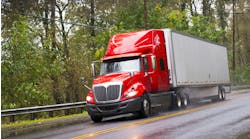Today fleets are hyper focused on maintenance in order to keep aging assets in top operating condition. Since all signs point to more allocations in 2023, it is likely that fleet assets will continue to age, and maintenance will continue to be a priority.
While proper preventive maintenance keeps trucks on the road, there also seems to be a connection between a well-maintained truck and better fuel economy. According to the recent Critical Issues in Trucking — 2022, published by the American Transportation Research Institute, fuel costs were at the top of the list. That is not surprising given that diesel was at $5.34 a gallon on October 24, according to the U.S. Energy Information Administration.
If you are maintaining your trucks properly, you likely are seeing some improvement in mileage, at least according to the North American Council for Freight Efficiency.
For better fuel economy, focus on these truck maintenance areas
- Engine oil: We all know the oil is the life blood of the engine. One of its key jobs is to reduce the friction between moving parts. The right oil in the right condition can boost fuel economy. In order to know if oil is still doing its job effectively, you need to perform oil analysis to check the oil’s viscosity, the total acid number, and the total base number. Make sure you are scheduling oil changes at the proper interval, especially as assets age. You may need to shorten the time between oil changes but let oil analysis be your guide.
- Tires: Keeping tires properly inflated should be a given because there is a direct correlation between low tire pressure and increased fuel consumption. It is estimated that for every 10 psi that a tire is underinflated, there will be a 1% loss of fuel economy. Consider investing in tire pressure monitoring and inflation systems and remind drivers of the importance of checking tire pressure during their pre- and post-trip inspections.
- Wheel alignment: An adjunct to proper tire inflation is proper alignment. Wheels that are out of alignment lead to increased tire rolling resistance. More rolling resistance means less fuel economy because the engine has to work extra hard to overcome the additional drag caused by misalignment. Periodically check alignment and adjust as needed.
- Air system: When an air filter gets clogged it prevents air from getting to the engine. Since internal combustion engines need both fuel and air to operate, restricted air flow creates problems. With today’s electronically controlled engines, it is important that the fuel-air mix be correct. When an air filter is severely clogged, extra fuel may get injected into the engine which can affect the exhaust and cause a regen to occur.
- Aerodynamic devices: Make sure to check the condition of all aerodynamic devices that are on the truck. Damaged aero devices, like torn chassis skirts, can have a negative impact on fuel economy. Repair or replace any damaged aero components as soon as possible.
- Other systems: Check things like the cooling system, electrical system, HVAC and any idle reduction technologies installed on the vehicle. When these items are not performing as designed, fuel economy can be affected. Even though the hit to fuel economy may be small, at $5.34 a gallon for diesel every additional tenth of a mile improvement in fuel economy counts.
Make sure to adjust your maintenance schedules for your older assets to not only keep them on the road, but also to ensure they get the most miles from a gallon of diesel.
Jane Clark is vice president of member services for NationaLease. In this position, she is focused on managing the member services operation as well as working to strengthen member relationships, reduce member costs, and improve collaboration within the NationaLease supporting groups. Prior to joining NationaLease, Clark served as area vice president for Randstad, one of the nation’s largest recruitment agencies, and before that, she served in management posts with QPS Cos., Pro Staff, and Manpower Inc.



